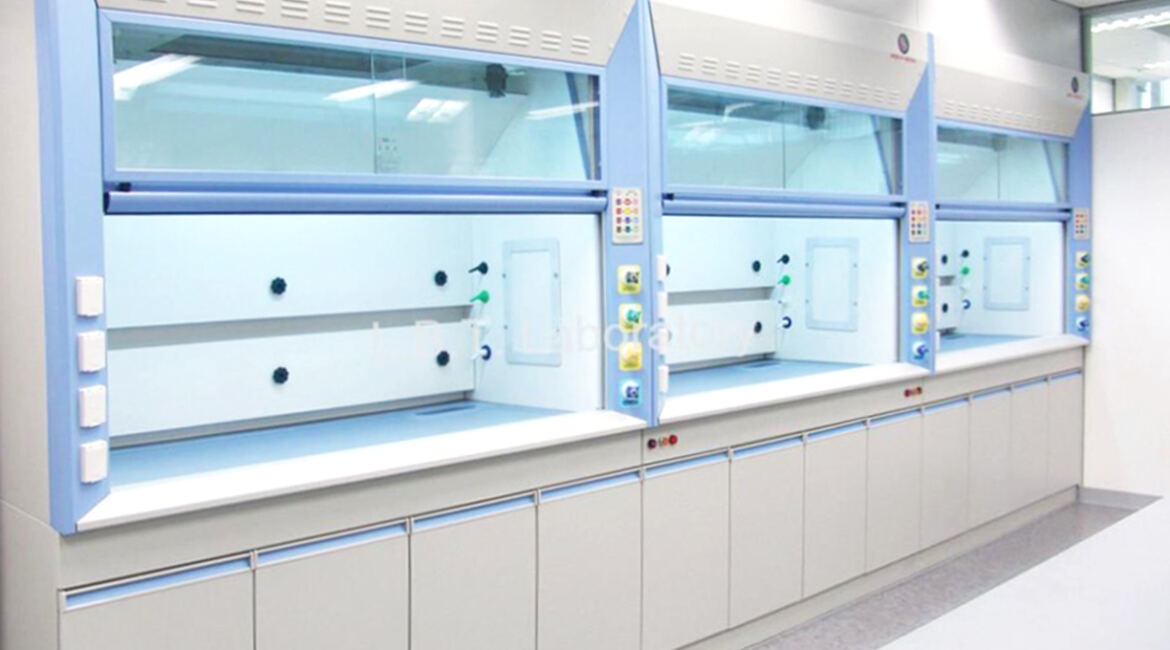How to Install a Ducted Steel Fume Hood

A ducted steel fume hood is an essential component in laboratories and industrial settings where hazardous fumes and vapors are present. Proper installation is crucial for ensuring safety and efficient operation. This guide will walk you through the process of installing a ducted steel fume hood, covering everything from preparation to the final checks.
1. Preparation
1.1 Assess the Location
- Ventilation Requirements: Ensure that the installation location has adequate space for proper ventilation. The fume hood should be placed in an area where the exhaust system can be connected to an appropriate ducting system leading outside.
- Structural Support: Verify that the installation site can support the weight of the fume hood. Reinforce the ceiling or wall if necessary.
1.2 Gather Tools and Materials
- Steel fume hood
- Mounting brackets and hardware
- Ductwork (steel or other suitable material)
- Exhaust fan
- Flexible ducting
- Sealing materials
- Drill and screws
- Measuring tape
- Level
2. Install the Ductwork
2.1 Plan the Duct Routing
- Design the Duct Layout: Determine the best route for the ductwork, minimizing bends and ensuring a straight path from the fume hood to the outside. This reduces airflow resistance and improves efficiency.
- Measure and Cut: Measure the length of ducting required and cut the ductwork to size.
2.2 Install the Ductwork
- Mount the Ducts: Secure the ductwork to the ceiling or wall using appropriate brackets and supports. Ensure that the ducts are securely fastened and aligned with the fume hood’s exhaust outlet.
- Connect Ducts: Attach the ducts to the fume hood’s exhaust outlet. Use appropriate sealing materials and clamps to ensure airtight connections.
3. Install the Fume Hood
3.1 Position the Fume Hood
- Mounting Brackets: Install the mounting brackets on the wall or ceiling where the fume hood will be placed. Ensure they are level and securely fastened.
- Place the Fume Hood: Lift the fume hood into position and secure it to the mounting brackets. Use a level to confirm that the fume hood is properly aligned.
3.2 Connect Electrical and Plumbing
- Electrical Connection: Connect the fume hood’s electrical supply to the power source. Ensure that all electrical connections comply with local codes and standards.
- Plumbing (if applicable): If the fume hood has plumbing connections for water or other utilities, connect these according to the manufacturer’s instructions.
4. Connect the Exhaust Fan
4.1 Install the Exhaust Fan
- Position the Fan: Place the exhaust fan at the end of the ductwork where it exits the building. Ensure it is securely mounted and aligned with the ducting.
- Connect Ducts: Attach the ductwork to the fan’s inlet and outlet. Use sealing materials to ensure airtight connections.
4.2 Test the Fan
- Power On: Turn on the exhaust fan and check for proper operation. Ensure that air is being effectively drawn through the ductwork and expelled outside.
- Check for Leaks: Inspect all connections and joints for any signs of air leaks. Seal any leaks as needed.
5. Final Checks and Testing
5.1 Verify Installation
- Inspect Connections: Ensure all connections, both electrical and ducting, are secure and properly sealed.
- Check Alignment: Verify that the fume hood is level and properly aligned with the ductwork.
5.2 Test the System
- Operational Test: Test the fume hood by running it with the exhaust fan on. Check for proper airflow and ensure that the fume hood is effectively removing fumes from the workspace.
- Safety Check: Confirm that all safety features, such as alarms and airflow monitors, are functioning correctly.
6. Maintenance and Safety
6.1 Regular Maintenance
- Inspect Ductwork: Periodically check the ductwork for any signs of damage or blockage.
- Clean Filters: If the fume hood has filters, clean or replace them according to the manufacturer’s recommendations.
6.2 Safety Precautions
- Training: Ensure that all users are trained in the safe operation of the fume hood.
- Emergency Procedures: Familiarize users with emergency procedures in case of fume hood malfunction or chemical spills.
Conclusion
Installing a ducted steel fume hood involves careful planning and attention to detail to ensure safety and efficiency. By following this guide, you can successfully install your fume hood and maintain a safe working environment. Remember to adhere to all relevant safety standards and regulations throughout the installation process.
Reference Link(OriginallyPosted):https://medium.com/@ziebaq/how-to-install-a-ducted-steel-fume-hood-15f6c868e535
- Industry
- Art
- Causes
- Crafts
- Dance
- Drinks
- Film
- Fitness
- Food
- Juegos
- Gardening
- Health
- Home
- Literature
- Music
- Networking
- Other
- Party
- Religion
- Shopping
- Sports
- Theater
- Wellness
- News


